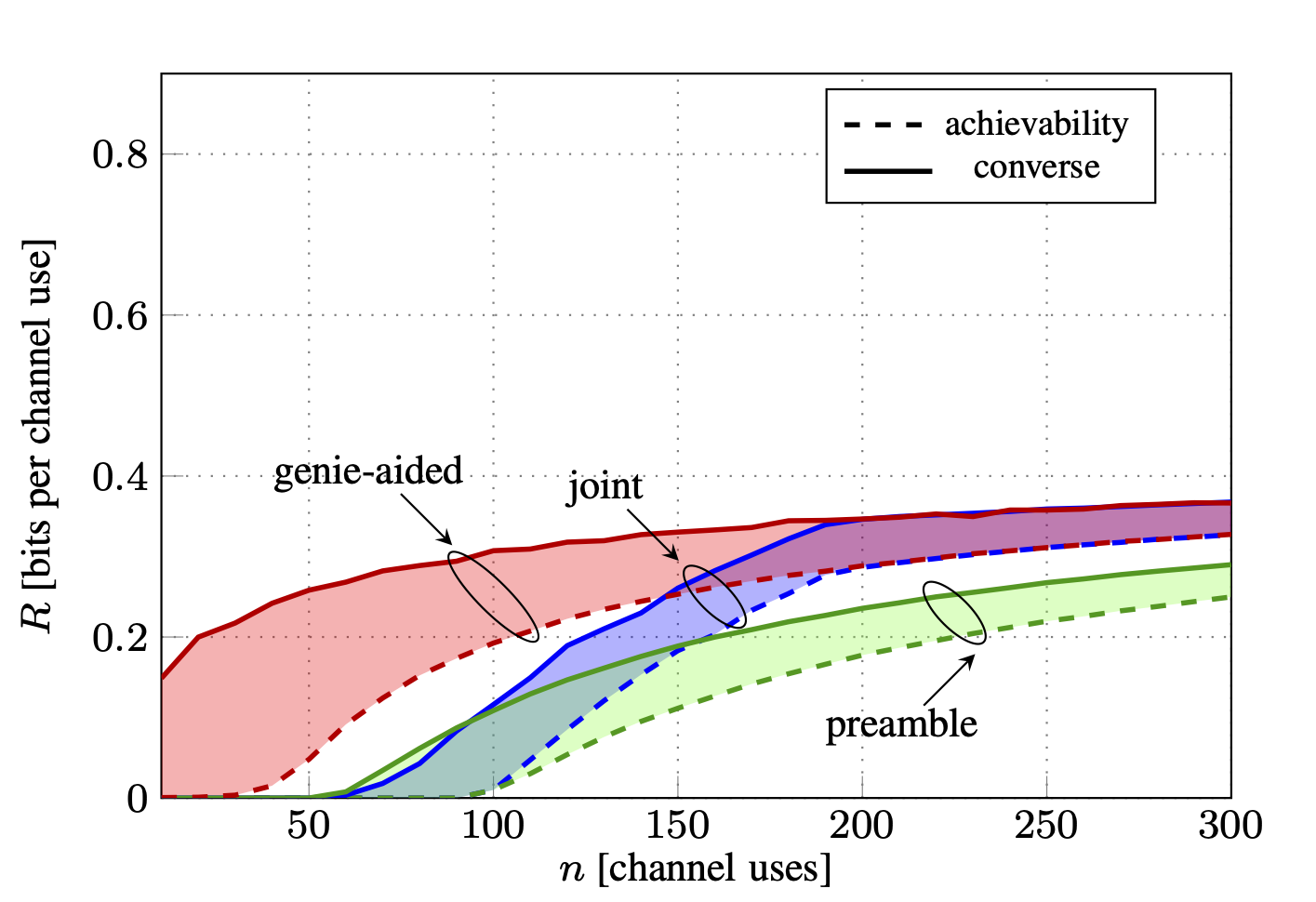paper at Globecom 2021
This week, we will present the following paper at the 2021 IEEE Global Communications Conference (GLOBECOM):
- A. Lancho, J. Östman, and G. Durisi, “On joint detection and decoding in short-packet transmission,” in Proc. IEEE Global Telecommun. Conf. (GLOBECOM), Madrid, Spain, Dec. 2021. [.pdf]
We have by now accurate and easy to compute bounds on the maximum coding rate, or, equivalently, the minimum error probability achievable in the short-packet regime, where each codeword spans a limited number of degrees of freedom. In this paper, we present general nonasymptotic bounds on these performance metrics for the scenario in which the receiver must first detect the presence of an information packet, and, if detected, decode the message carried within it. The bounds apply to both the setup in which detection is performed jointly with decoding on the entire data packet, or separately on a dedicated preamble.
Numerical results for the binary-input AWGN channel reveal that packet detection, even when performed jointly with decoding, is the performance bottleneck when the packets are very short and the SNR is low. Performing detection solely on a dedicated preamble is highly suboptimal, even when the length of the preamble is optimized.
As an example, in the figure below, we present the maximum coding rate
achievable on the binary-input AWGN channel, as a function of the number of
degrees of freedom (discrete channel uses) occupied by a codeword, for the case
in which the SNR is 3 dB, the misdetection and false alarm probabilities are
set to $10^{-4}$, and the inclusive error (i.e., the probability that the
receiver does not decode correctly a transmitted codeword) is $10^{-3}$. We
consider the three cases of genie-aided detection, joint detection and
decoding, and preamble-based detection followed by decoding. As shown in the
figure, packet detection is indeed the bottleneck when the number of channel
uses is small. Furthermore, joint detection and decoding outperforms
significantly preamble-based detection. How to approach the joint detection and
decoding bound by means of low-complexity coding schemes is an interesting
open problem. 



